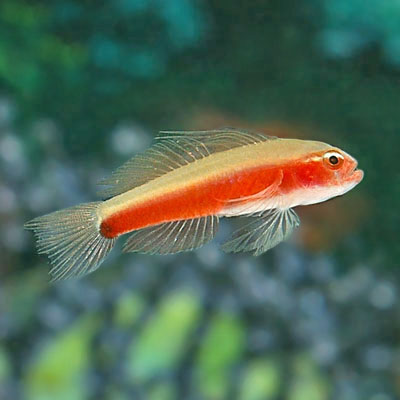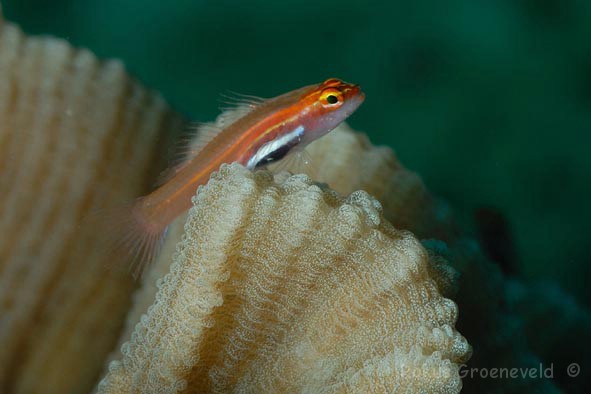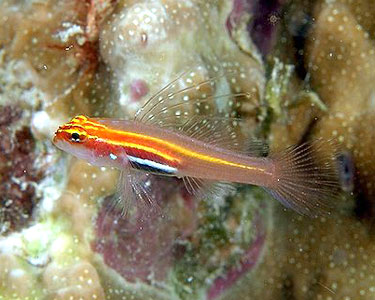
Pandaka pygmaea
FAMILY
Gobiidae
TAXONOMY
Pandaka pygmaea Herre, 1927, Philippines (possibly Malabon).
OTHER COMMON NAMES
German: Zwerggrundel; Tagalog: Bia.
PHYSICAL CHARACTERISTICS
A very small fish; females reach 0.6 in (1.5 cm) total length.
Body is covered with scales, up to 25 in a longitudinal series
along the flanks. The second dorsal and anal fins have six or
seven soft rays. The pelvic fins are united into a small sucking
disk. The body has a conspicuous pigmentation, with about
four cross bands of dark spots on the flanks, and heavy pigmentation
on the bases of all the fins except the pelvics. In
males, the first dorsal fin is tipped with blue and the lower
third is yellowish.
DISTRIBUTION
First reported as possibly from Malabon, a suburb of Manila in
the Philippines. The presence of the species in the Malabon
River was confirmed in the 1950s. Subsequently, it has been
found at an island off Palawan (Philippines), the east coast of
peninsular Thailand, Singapore, Bali, Sulawesi, and New
Guinea.
HABITAT
Found along river banks in the Philippines from January to
June, when the water is clear and the tide is rising. During the
rainy season the fishes apparently move into ponds and canals.
Also found in brackish waters and around mangroves. Some
specimens were apparently caught in marine waters adjacent to
Palawan. Fishes kept in aquaria can acclimate to marine, brackish,
or freshwater conditions.
BEHAVIOR
Usually stationary, on surfaces of rocks or plants, or hanging in
midwater. Swimming occurs in an erratic series of starts.
FEEDING ECOLOGY AND DIET
Aquarium-kept specimens are voracious, feeding on brine
shrimps and other small or chopped invertebrate material.
REPRODUCTIVE BIOLOGY
Nothing known.
CONSERVATION STATUS
Listed as Critically Endangered by the IUCN, with an observed
or suspected population reduction of 90% or more over
the last 10 years, or three generations. Populations are threatened
by introduced species, hybridization, pathogens, pollutants,
competitors, or parasites.
SIGNIFICANCE TO HUMANS
None known.
Photo Gallery of - Dwarf pygmy goby





 Animalia Life
Animalia Life